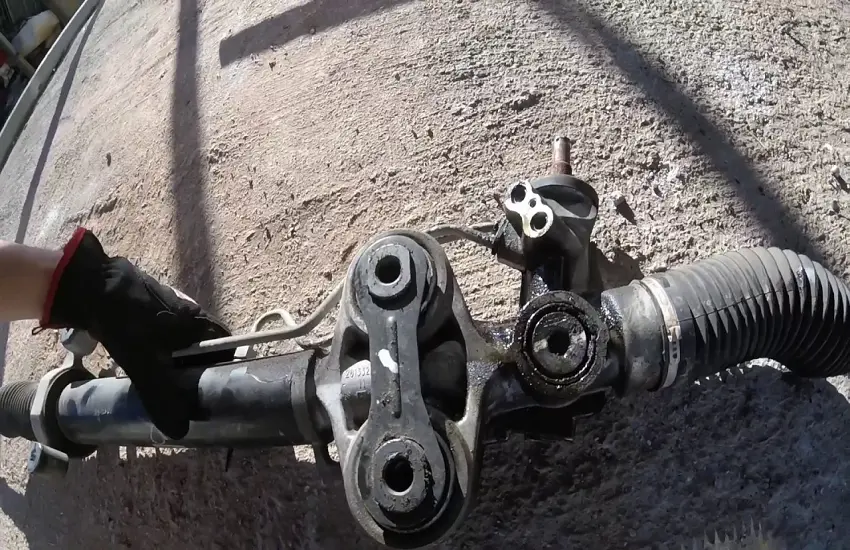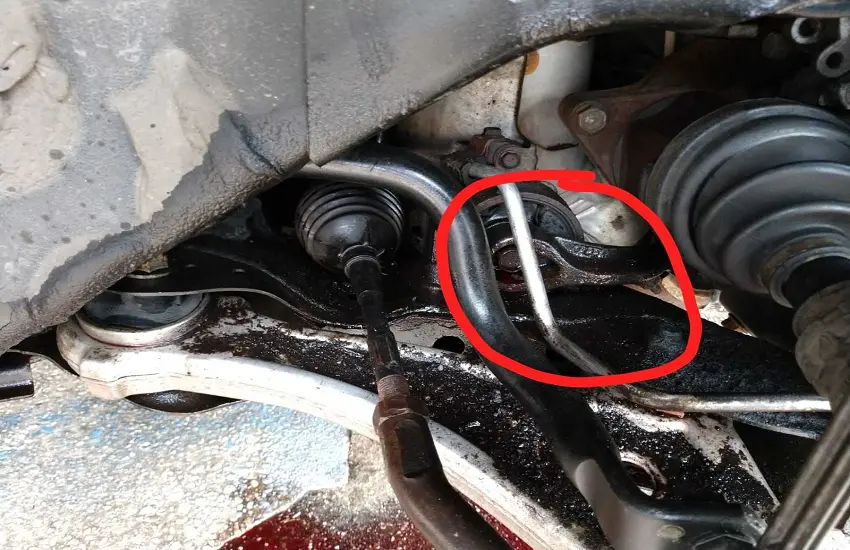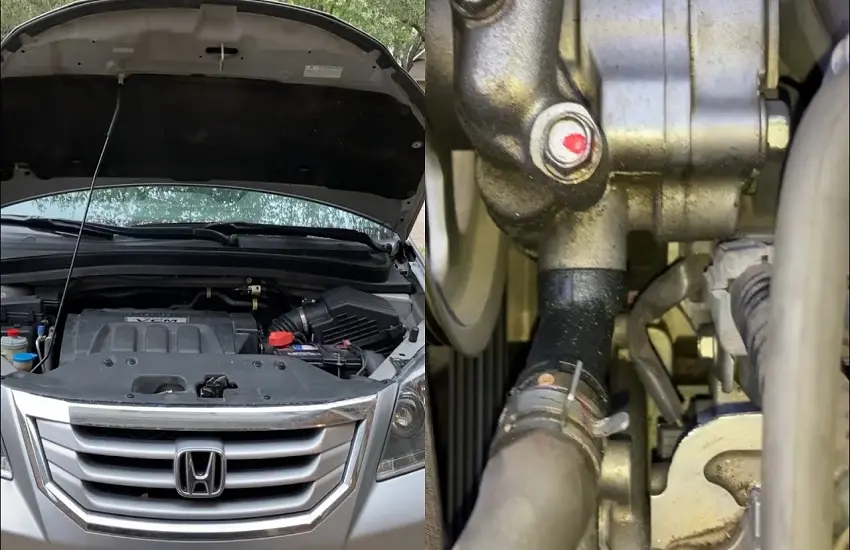Power steering fluid plays a crucial role in the smooth and effortless operation of your vehicle’s steering system. This specialized hydraulic fluid is responsible for transferring force from the steering wheel to the steering mechanism, allowing drivers to maneuver their cars with minimal effort.
The primary functions of power steering fluid include:
Hydraulic Force Transfer:
The fluid acts as a medium to transmit the force applied to the steering wheel through the power steering pump. This hydraulic force is then used to assist the steering gear, making it easier to turn the wheels.
Lubrication:
Power steering fluid lubricates the various components within the power steering system, such as the pump, valves, and the steering rack or gear. This helps reduce wear and tear, ensuring the system operates smoothly and efficiently.
Cooling:
The fluid also helps dissipate heat generated by the power steering pump and other moving parts, preventing the system from overheating and maintaining optimal performance.
Maintaining Hydraulic Pressure:
Power steering fluid is essential for maintaining the appropriate hydraulic pressure within the power steering system. This pressure is what provides the “power” in power steering, making it easier to turn the wheels, especially at low speeds or when the vehicle is parked.
Without the proper amount and condition of power steering fluid, the steering system can become stiff, unresponsive, and even potentially unsafe to operate. Keeping the power steering fluid at the recommended level and replacing it at the intervals specified by the manufacturer is crucial for maintaining the integrity and functionality of this critical automotive system.
Signs of a Power Steering Fluid Leak
Identifying a power steering fluid leak is crucial for maintaining the health of your vehicle’s steering system. Some common signs of a power steering fluid leak include:
Stiff or Heavy Steering:
If you notice that the steering wheel has become significantly harder to turn, especially at low speeds or when the vehicle is stationary, it could indicate a power steering fluid leak.
Whining or Groaning Sounds:
A power steering fluid leak can cause the power steering pump to work harder, resulting in audible whining or groaning noises when you turn the steering wheel.
Visible Fluid Drips or Puddles:
One of the most obvious signs of a power steering fluid leak is the presence of fluid drips or puddles under the vehicle, typically near the power steering system components.
Low Power Steering Fluid Level:
If the power steering fluid level in the reservoir is consistently low, it’s a clear indication that there is a leak somewhere in the system.
It’s important to address power steering fluid leaks promptly, as continued operation with low fluid levels can lead to further damage to the power steering system components, potentially resulting in costly repairs.
Early Warning Signals
Your car will usually give you several hints before a major steering problem develops:
- Steering wheel stiffness, especially during low-speed maneuvers
- Whining or groaning noises when turning
- Delayed steering response
- Vibration in the steering wheel
- Car handling problems, particularly at low speeds
The Power Steering Fluid Color Guide

| Fluid Color | What It Means | Action Needed |
| Clear/Amber | New fluid | Normal – no action |
| Light Brown | Slightly aged | Monitor condition |
| Dark Brown | Contaminated | Plan replacement |
| Black | Severely degraded | Immediate replacement |
| Pink/Red | Wrong fluid type | Flush and replace |
Causes of a Power Steering Fluid Leak
There are several potential causes of a power steering fluid leak, including:
Worn or Damaged Power Steering Hoses:
The high-pressure hoses that connect the power steering pump to the steering gear or rack can develop cracks, holes, or other types of wear and tear over time, leading to fluid leaks.
Faulty Power Steering Pump Seals:
The seals within the power steering pump can deteriorate, allowing fluid to escape the system.
Issues with the Power Steering Rack or Gear:
The seals and O-rings in the power steering rack or gear can also degrade, causing fluid leaks.
Loose Power Steering System Connections:
If the hose clamps, fittings, or other connections in the power steering system are not properly tightened, they can become a source of fluid leaks.
Corrosion or Damage to Power Steering Components:
Over time, the power steering system components can become corroded or damaged, leading to fluid leaks.
Addressing the root cause of the power steering fluid leak is essential to prevent further damage and ensure the safe operation of your vehicle’s steering system.
What to Do if You Find a Power Steering Leak
If you suspect a power steering fluid leak, it’s important to take immediate action to prevent further damage and ensure the safety of your driving experience. Here’s what you should do:
Safely Pull Over and Inspect the Vehicle:
If you notice a power steering fluid leak while driving, find a safe place to pull over and inspect the vehicle. This will allow you to assess the severity of the leak and determine the appropriate next steps.
Identify the Source of the Leak:
Carefully examine the power steering system, including the hoses, pump, rack or gear, and any visible connections. Try to pinpoint the exact location of the leak to help guide the repair process.
Replenish the Power Steering Fluid, If Safe:
If the fluid level is low and it’s safe to do so, you can carefully add the recommended power steering fluid to the reservoir. However, this is only a temporary solution, and the underlying issue should be addressed as soon as possible.
Seek Professional Diagnosis and Repair:
Once you’ve identified the leak, it’s essential to have the power steering system inspected and repaired by a qualified automotive technician. Attempting to perform repairs without the proper expertise and tools can lead to further damage and safety concerns.
It’s important to note that driving with a significant power steering fluid leak can be dangerous, as it can affect the vehicle’s handling and make it more difficult to control. If the leak is severe or the steering feels significantly impaired, it’s best to avoid driving the vehicle and have it towed to a repair shop for professional assessment and repair.
How to Check and Top Up Power Steering Fluid

Maintaining the proper level and condition of power steering fluid is crucial for the smooth and safe operation of your vehicle’s steering system. Here’s how to check and top up the power steering fluid:
Locate the Power Steering Fluid Reservoir:
The power steering fluid reservoir is typically located near the front of the engine compartment, often close to the power steering pump.
Inspect the Fluid Level:
With the engine running, check the power steering fluid level in the reservoir. The fluid level should be between the “Min” and “Max” markings on the reservoir. If the level is low, proceed to the next step.
Top Up the Fluid:
Carefully add the recommended power steering fluid to the reservoir, taking care not to overfill it. Refer to your vehicle’s owner’s manual or service information to determine the appropriate fluid type and quantity.
Avoid Overfilling:
Pouring in too much power steering fluid can lead to leaks, foaming, and potential damage to the system. Always follow the manufacturer’s guidelines for the correct fluid level.
Check the Fluid Condition:
Inspect the power steering fluid for any signs of discoloration, contamination, or excessive foaming. If the fluid appears dirty or degraded, it’s a good idea to have the system flushed and refilled with fresh fluid.
Regular maintenance of the power steering fluid level and condition is essential for the long-term health and performance of your vehicle’s steering system. Neglecting this vital component can lead to increased wear and tear, reduced responsiveness, and potentially dangerous handling characteristics.
Importance of Regular Power Steering Fluid Maintenance
Proper maintenance of your vehicle’s power steering fluid is crucial for ensuring the longevity and safe operation of the steering system. Here are some key reasons why regular power steering fluid maintenance is so important:
Extend the Lifespan of Power Steering Components:
Power steering fluid helps lubricate and protect the various components within the system, including the pump, valves, and steering rack or gear. Keeping the fluid fresh and at the recommended level can significantly extend the lifespan of these critical parts
Prevent Costly Repairs:
Neglecting power steering fluid maintenance can lead to premature wear and tear on the system’s components, ultimately resulting in more expensive repairs down the line. Addressing issues early, such as power steering fluid leaks, can save you money in the long run.
Maintain Smooth and Responsive Steering:
Well-maintained power steering fluid ensures the system operates at optimal hydraulic pressure, providing the driver with smooth, effortless, and responsive steering performance, even at low speeds or when the vehicle is stationary.
Enhance Driving Safety:
Proper power steering fluid maintenance helps maintain the integrity of the steering system, ensuring your vehicle’s handling and maneuverability remain stable and predictable, even in emergency situations.
Comply with Manufacturer Recommendations:
Most vehicle manufacturers specify recommended power steering fluid maintenance intervals, which should be followed closely to maintain the warranty and ensure the longevity of the steering system.
By staying vigilant and proactively maintaining your power steering fluid, you can help extend the life of your vehicle’s steering system, save money on costly repairs, and enjoy a safer, more enjoyable driving experience.
Cost Comparison: Prevention vs. Repair

| Maintenance Task | Cost | Emergency Repair Cost | Savings |
| Fluid Change | $50-100 | $400-600 | $300-500 |
| Hose Replacement | $150-300 | $500-800 | $350-500 |
| Pump Replacement | $400-600 | $800-1200 |
What are the signs of a power steering fluid leak?
The most common signs of a power steering fluid leak include stiff or heavy steering, whining or groaning sounds from the power steering pump, visible fluid drips or puddles under the vehicle, and a consistently low power steering fluid level in the reservoir. These issues indicate a problem within the power steering system, often caused by worn hoses, faulty seals, or loose connections. Identifying and addressing a power steering fluid leak as soon as possible is crucial to prevent further damage and ensure safe vehicle operation.
How often should power steering fluid be changed?
The recommended interval for changing power steering fluid varies by vehicle make and model, but most manufacturers suggest changing it every 30,000 to 60,000 miles or every 2-3 years.
However, it’s important to consult your owner’s manual or seek guidance from a qualified automotive technician, as some vehicles may have different maintenance schedules.
Regularly flushing and replacing the power steering fluid helps remove contaminants, maintain optimal hydraulic pressure, and extend the lifespan of the steering system components.
What happens if you overfill the power steering reservoir?
Overfilling the power steering reservoir can lead to a variety of problems. The excess fluid can cause foaming, which can reduce the system’s efficiency and lead to increased wear on the pump and other components.
Additionally, the over pressurized fluid may cause seals and hoses to leak, resulting in fluid loss and potential damage to the steering system.
In severe cases, the high pressure can even cause the power steering pump to fail. To avoid these issues, it’s crucial to carefully follow the manufacturer’s recommended power steering fluid level and never exceed the “Max” marking on the reservoir.
Can you mix different types of power steering fluid?
No, it is generally not recommended to mix different types of power steering fluid. Each fluid formulation is designed to be compatible with specific materials and components used in the power steering system.
Combining different fluids can lead to compatibility issues, potentially causing swelling, shrinkage, or degradation of the system’s seals and other parts. This can result in leaks, reduced performance, and even accelerated wear.
Always refer to your vehicle’s owner’s manual or consult a professional to determine the correct power steering fluid type and ensure it is used exclusively in your vehicle’s steering system.
What are the consequences of low power steering fluid?
Driving with low power steering fluid can have severe consequences for your vehicle’s steering system and overall driving safety. As the fluid level drops, the power steering pump must work harder to maintain the necessary hydraulic pressure, which can lead to increased wear and potential failure of the pump.
Without sufficient fluid, the steering will become increasingly stiff and difficult to operate, especially at low speeds or during parking maneuvers. This can compromise the driver’s ability to maintain control of the vehicle, potentially leading to dangerous situations.
Neglecting low power steering fluid levels can also cause damage to other system components, resulting in costly repairs. It is crucial to address any power steering fluid leaks or low levels promptly to ensure the safety and reliability of your vehicle’s steering system.
Conclusion: Power Steering Leak
Power steering fluid is a critical component of your vehicle’s steering system, responsible for transferring force from the steering wheel, lubricating moving parts, and maintaining the necessary hydraulic pressure for effortless maneuverability. Neglecting power steering fluid maintenance can lead to a range of issues, including stiff steering, fluid leaks, and potential safety concerns.
To ensure the longevity and proper functioning of your power steering system, it’s essential to regularly check the fluid level, top up as needed, and replace the fluid at the intervals recommended by the vehicle manufacturer. By staying vigilant and addressing power steering fluid-related problems promptly, you can help extend the lifespan of your vehicle’s steering components, avoid costly repairs, and maintain a safe, responsive, and enjoyable driving experience.
Quick Reference: Power Steering Troubleshooting Guide
| Symptom | Possible Cause | Immediate Action |
| Whining Noise | Low fluid/Air in system | Check/Top up fluid |
| Stiff Steering | Low fluid/Pump failure | Check fluid/Professional inspection |
| Fluid Leaks | Damaged seals/hoses | Locate leak/Professional repair |
| Grinding Noise | Pump failure/Low fluid | Stop driving/Professional help |
Remember: Your power steering system is crucial for safe car manoeuvring. Don’t wait for problems to develop—regular maintenance and prompt attention to issues will keep you safely on the road and save money in the long run.
Remember, power steering fluid is the lifeblood of your vehicle’s steering system, and proper maintenance of this crucial fluid can make all the difference in the world.

With over 5 years of dedicated experience in the automotive industry, I am passionate about all things automotive. My journey began with a deep curiosity for automobiles, which led me to delve deeper into their mechanics, technology and trends. My expertise spans various aspects of the automotive world, from the latest electric vehicles to classic car restoration techniques. Through my articles, I aim to share my knowledge and insights, helping readers stay informed and inspired in the fast-paced world of the automobile.












